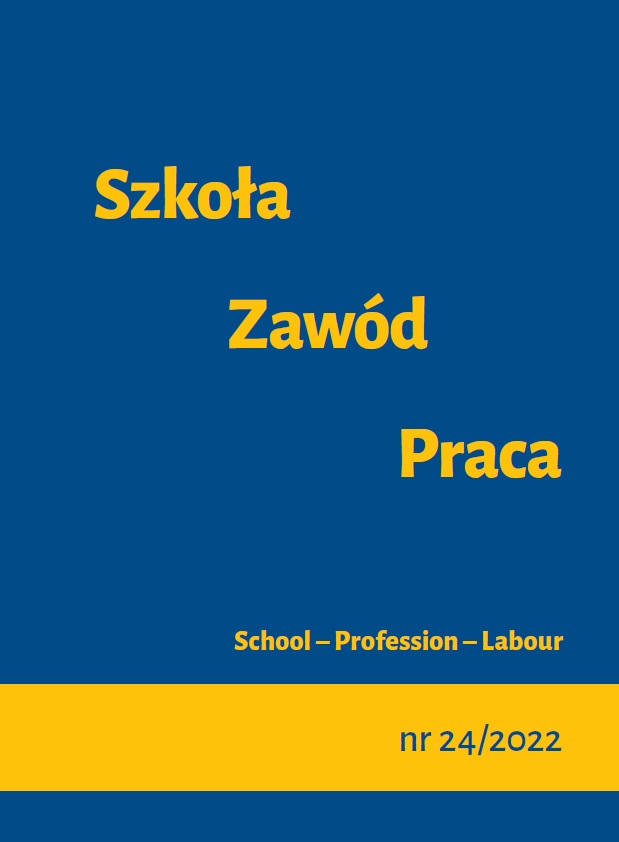Safety education – a research area that labour educators tend to underrate
DOI:
https://doi.org/10.34767/SZP.2022.02.02Keywords:
workplace health and safety, company health and safety services, health and safety training, training process, optimisation health and safety trainingAbstract
Work has always been carried out with a view to eliminating the associated risks to the health and life of the worker. Regulations have been created to strengthen work safety, and institutions have been organised to serve this purpose. Today, in our country there is an extensive legal system that specifies safe work in all businesses. It is supported by scientific and training institutions. As an example of the former; there is the Central Institute for Labour Protection and the National Labour Inspectorate, etc. A representative for the second one is the nationwide training company SEKA S.A. An important element of the strategy of protecting people at work today is an educational activity, commonly known as training in workplace health and safety. It is organized by the employer and carried out by the company’s workplace health and safety services. The course and organization of this training are regulated by detailed regulations. In accordance with their intentions, an original multilevel system of training employees in the field of workplace health and safety has been developed in individual enterprises of all departments (branches). However, the development and consolidation of this system were not accompanied by scientific research into its functioning. If such research was undertaken, it was sporadic and carried out by the simplest methods (statistical analysis, questionnaire). For this reason, the real knowledge of the functioning of the workplace health and safety training system (methodology and organisation, motivation and activity of participants in classes) is poor. The same applies to the effects of training. Under these conditions, today, there is a necessity to intensify, broaden and deepen the research on this system. The realization of this necessity is a task for labour pedagogy for the next years and at the same time a confirmation of the need for this scientific speciality. The results of such research should be used to develop a better strategy for workplace health and safety in many employee positions.
References
Aleksander T. (1998). Optymalizacja pozaszkolnej edukacji zawodowej dorosłych. Kraków: Impuls.
Chojnicki, J., Jaroszewicz, G. (2020). ABC BHP. Informator dla pracodawców. Warszawa: PIP.
Diagnoza i prognoza rynku usług BHP oraz charakterystyka służb BHP w Polsce. Raport (2020). Warszawa: Centralny Instytut Ochrony Pracy.
Hansen, A. (1998). Bezpieczeństwo i higiena pracy, wyd. 8. Warszawa: WSiP.
Kodeks pracy (2020). Ustawa z dnia 26 czerwca 1974 r. (t.j. Dz.U. z 2020, poz.1320).
RMG (2004). Rozporządzenie Ministra Gospodarki i pracy z dnia 27 lipca 2004 r. w sprawie szkolenia w dziedzinie bezpieczeństwa i higieny pracy (Dz.U. z 2004, nr 180, poz.1860, ost. zm. Dz.U. z 2019, poz. 1099).
RRM (1997). Rozporządzeniem Rady Ministrów z dnia 2 września 1997 r. w sprawie służby bezpieczeństwa i higieny pracy (ost. zm. Dz.U. z 2005, nr 117, poz. 986).
Szkolenia – powrót do normalności. Porady ekspertów. SEKA – magazyn, 2 (28). (2021).


